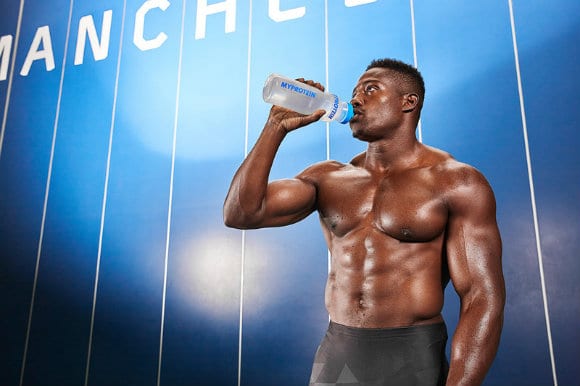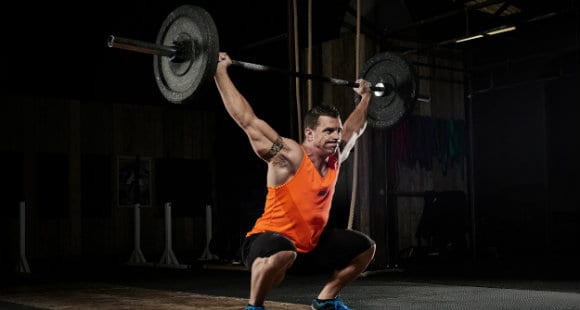By healthiergang writer The Fitchef, food blogger and nutrition expert.
Glycogen
Nutrition is a key part of any athlete's training regimen. Not ingesting enough calories (Kcal-Kcal) can result in a lack of important macro and micro nutrients.
This is especially true when it comes to carbohydrates (CHOs).
Modern society tends to "demonize" carbohydrates and daily nutrition "gurus", books and diets are increasing in support of the theory that high-protein, high-fat diets with significant carbohydrate limitations are the way to go. walk to lose weight, have a healthy diet, and even improve performance for competitive athletes.
However, such diets have no substantial scientific evidence - especially when it comes to athletic performance.

This it is especially true for athletes who limit their carbohydrate intakeon the contrary, a massive amount of scientific evidence gathered over the past 50 years clearly shows that a good carbohydrate-rich diet is critical to maintaining performance.
Not science tells us this, but also the real life experiences of athletes who perform at the highest level. We can find a great example of this in Kenyan runners who are by far the best endurance runners in track and field history, and have dominated all major events internationally for decades.
The percentage of carbohydrates in their diet is 76,5%… and 20% of their total daily calorie intake is derived from sugar!
Therefore, it seems clear that uAn adequate percentage of carbohydrates is of great importance.
Unfortunately, there are many amateur and competitive athletes who are either unaware of the importance of carbohydrates and glycogen stores for proper physical training and effective performance.
A little chemistry
The rate of ATP synthesis parallels the intensity of exercise which determines the substrate needs of skeletal muscle to generate ATP.
During exercise, skeletal muscle mainly uses fat and CHO for energy purposes, in low-intensity exercise fat is the preferred substrate, although there is always some glucose utilization.
At higher exercise intensities of approximately 50-60% of VO2max, the demand for ATP synthesis increases, and the fat cannot quite meet that demand, it increases the oxidation of glucose.
Also, at higher exercise intensities, fats cannot synthesize ATP fast enough for the contractile demands of skeletal muscle fibers.
Although the use of fat produces a higher amount of ATP, the utilization of glucose is much faster and, therefore, necessary for the synthesis of ATP. This is why carbohydrates are of great importance during high intensity exercise during competition.
What is that?
Glycogen it is the form in which glucose and carbohydrates (CHO) are stored in animals and humans. Carbohydrates are a very limited source of energy representing only about 1-2% of the total stored body energy.
Furthermore, about 80% of total carbohydrates are stored in skeletal muscle, about 14% is stored in the liver and about 6% in the blood in the form of glucose. This would represent approximately 300-400g of glycogen stored in the muscles and approximately 70-100g stored in the liver.

How can we see, while glycogen is “gold” for athletes, we have a rather limited capacity to store it.
At rest, skeletal muscle only accounts for 15-20% of peripheral glucose utilization, while during an exercise with an intensity of 55-60% VO2 max, the utilization of glucose by skeletal muscle could go as high as to 80-85% of the reserves in the whole body.
Thus muscle glycogen is essential for the resynthesis of ATP during exercise.
Improving Glycogen Reserves
The muscles and liver store enough glycogen to properly fuel the body for about 90 minutes. Intense exercise lasting over 90 minutes can cause fatigue and poor performance.
Carbohydrate loading is a method of increasing glycogen stores and improving endurance.
This type of nutrition plan includes carbohydrate loading about a week before running a strenuous activity, such as a marathon or long bike race.
The first step of carbohydrate loading focuses on eating about 50 to 55 percent of your daily calories in the form of carbohydrates, such as grains, fruits and vegetables. After three to four days, you increase your carbohydrate intake to cover about 70 percent of the calories you consume each day.
Carbohydrate loading can increase glycogen stores to more than 25 percent, although this type of plan is not effective for everyone - for example, women may realize fewer benefits than their male counterparts.


























